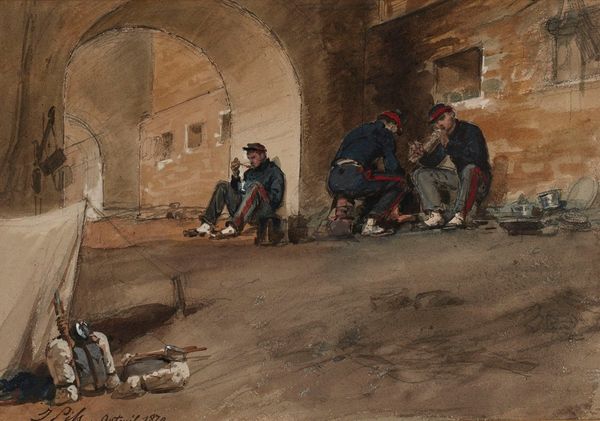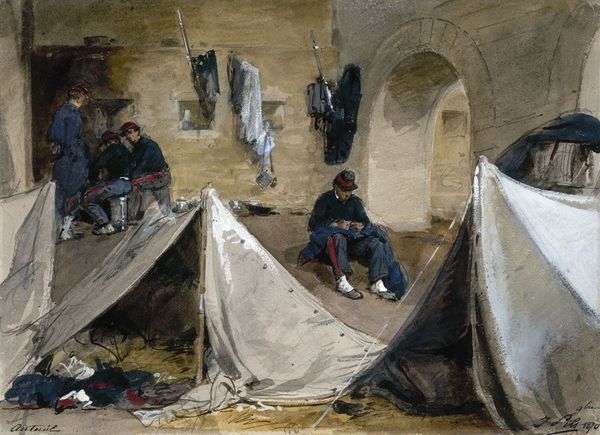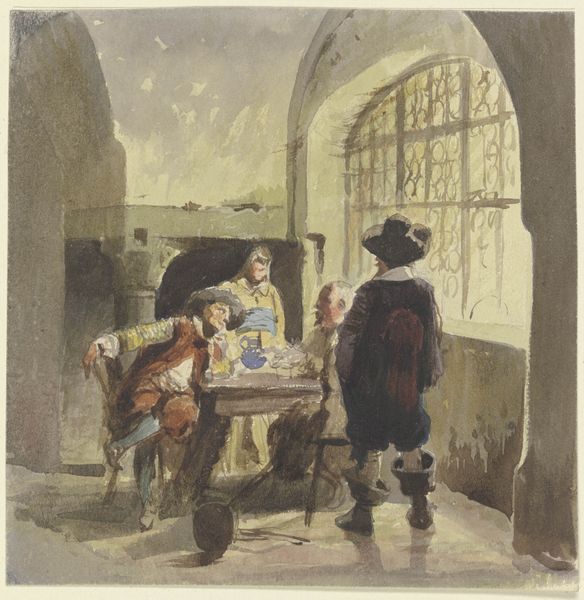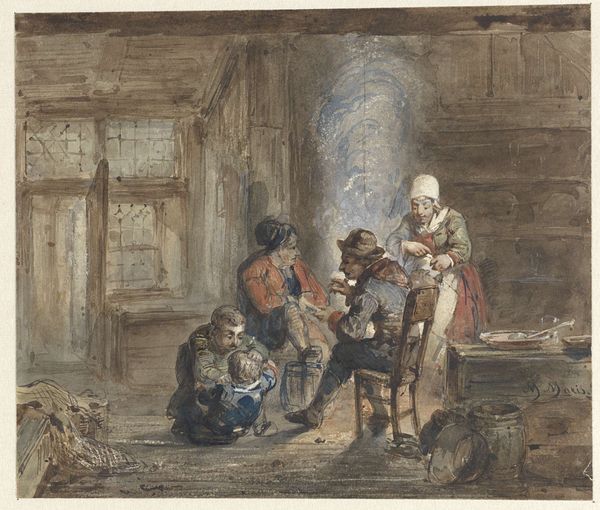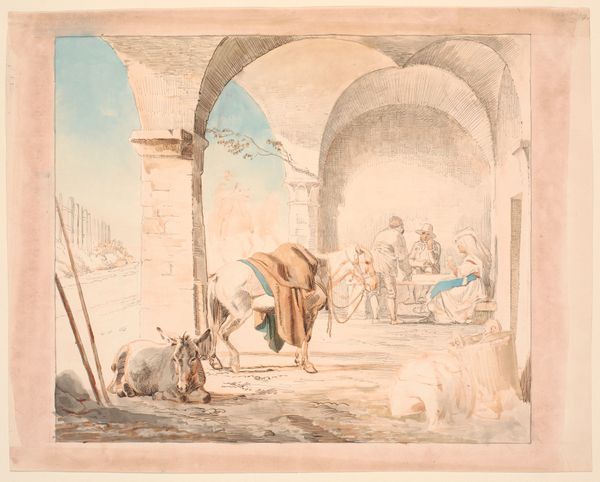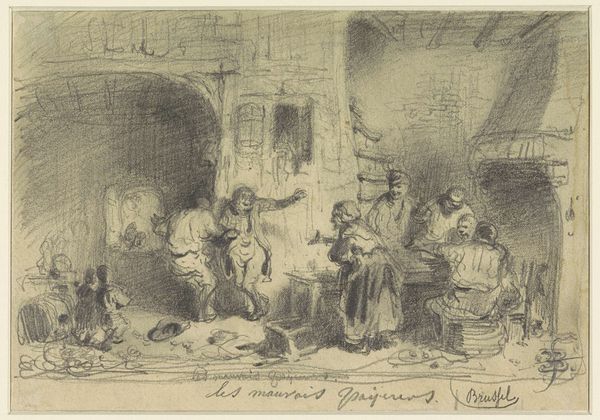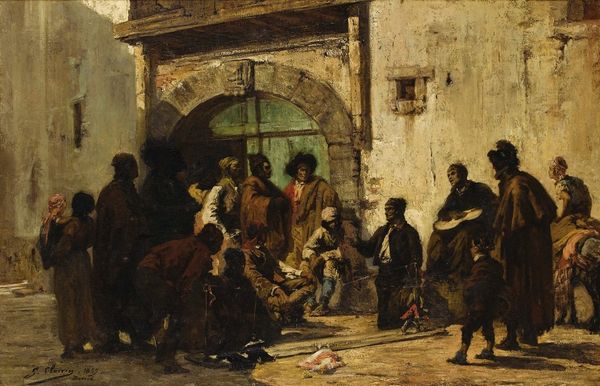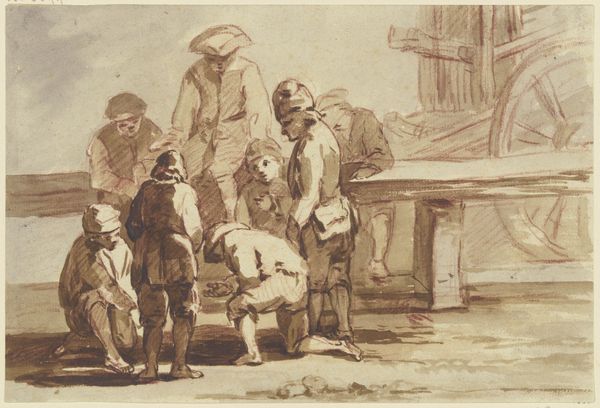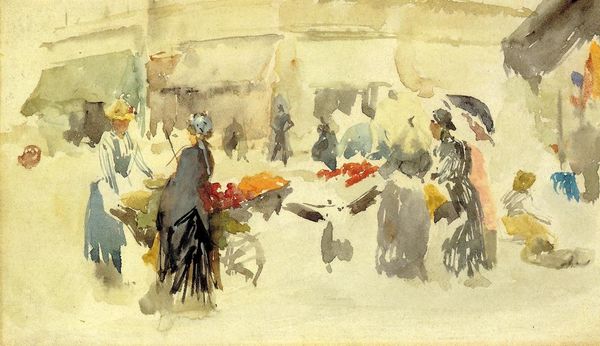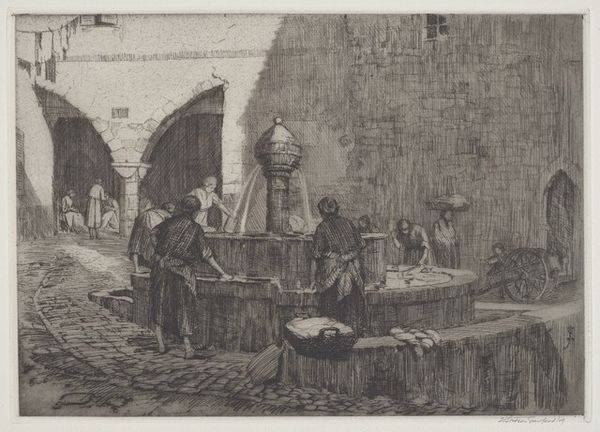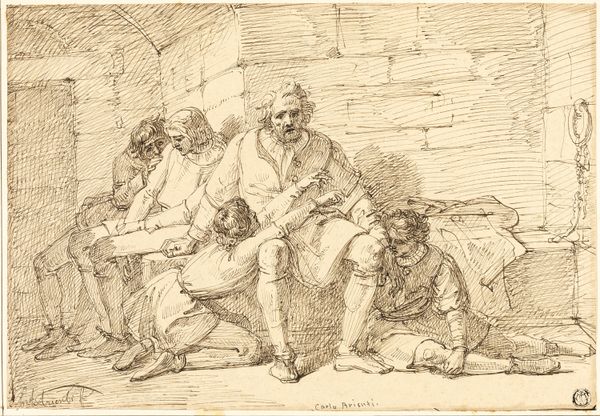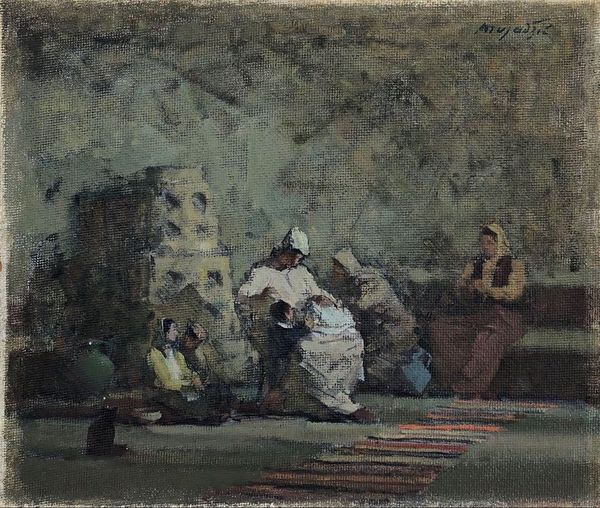
Copyright: Public Domain: Artvee
Curator: Let’s discuss “Mobiles sous le viaduc d’Auteuil,” a watercolor by Isidore Pils created in 1870. What is your first impression? Editor: A pervasive sense of gloom strikes me. The muted palette, dominated by earthen tones and grays, evokes the dreary and enclosed conditions these soldiers must have endured. Curator: I'd agree with that sentiment, however, the artist uses watercolor masterfully to create depth, particularly through the play of light and shadow. Notice how the arched tunnel creates a structural rhythm, leading the eye deeper into the composition. The orthogonal lines forming these arches are almost Romanesque. Editor: And I see echoes of conflict—the Franco-Prussian War looms heavily over this work, doesn’t it? The piece provides us an insight into the domestic aspects of war, depicting soldiers encamped under what appears to be the Auteuil viaduct during wartime, highlighting their quotidian existence amidst conflict. The image speaks to the disruption of everyday life and offers a very grounded, empathetic perspective on those who faced unimaginable hardships. Curator: I see your point, and that narrative is definitely at play. Yet, considering its aesthetic merits, I would argue that the loose brushwork, capturing fleeting moments, places Pils within the Realist tradition. Editor: It is hard to deny that this piece highlights the reality of these men at war. But I'd also like to suggest that this isn’t simply a detached depiction; it humanizes the soldiers by representing their everyday activities. Their red hats almost shout a demand that we cannot just see them as soldiers, but as human beings. I think we might be understimating Pils' talent as a subtle political commentator on conflict here. Curator: A persuasive analysis, connecting form to its historical and cultural milieu. Considering the use of watercolor, and especially the details of their blue and red uniforms and caps, its chromatic scheme could almost lean toward impressionism. Editor: Considering both your attention to form and my sociopolitical perspective, I’m beginning to notice even more levels of understanding, aren't you? It strikes me that Pils' work isn't only capturing reality, but also seeking a certain sensitivity towards the people who endured it. Curator: Yes, absolutely. Pils has allowed me, through our conversation, to perceive multiple qualities that may have originally eluded me upon initial encounter.
Comments
No comments
Be the first to comment and join the conversation on the ultimate creative platform.
